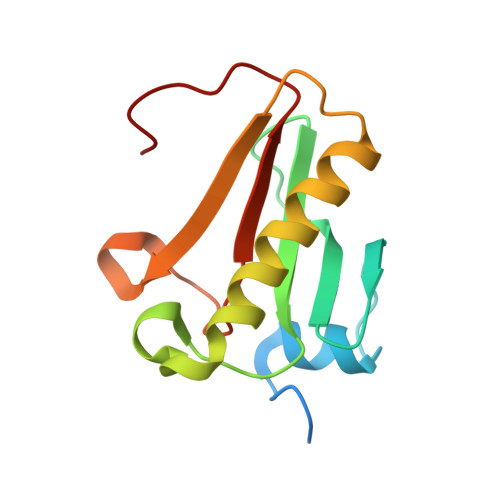A Crystal Structure Based Guide to the Design of Human Histidine Triad Nucleotide Binding Protein 1 (hHint1) Activated ProTides.
Maize, K.M., Shah, R., Strom, A., Kumarapperuma, S., Zhou, A., Wagner, C.R., Finzel, B.C.(2017) Mol Pharm 14: 3987-3997
- PubMed: 28968488
- DOI: https://doi.org/10.1021/acs.molpharmaceut.7b00664
- Primary Citation of Related Structures:
5KLY, 5KLZ, 5KM0, 5KM1, 5KM2, 5KM3, 5KM4, 5KM5, 5KM6, 5KM8, 5KM9, 5KMA, 5KMB, 5WA8, 5WA9, 6B42 - PubMed Abstract:
Nucleotide analogues that incorporate a metabolically labile nucleoside phosphoramidate (a ProTide) have found utility as prodrugs. In humans, ProTides can be cleaved by human histidine triad nucleotide binding protein 1 (hHint1) to expose the nucleotide monophosphate. Activation by this route circumvents highly selective nucleoside kinases that limit the use of nucleosides as prodrugs. To better understand the diversity of potential substrates of hHint1, we created and studied a series of phosphoramidate nucleosides. Using a combination of enzyme kinetics, X-ray crystallography, and isothermal titration calorimetry with both wild-type and inactive mutant enzymes, we have been able to explore the energetics of substrate binding and establish a structural basis for catalytic efficiency. Diverse nucleobases are well tolerated, but portions of the ribose are needed to position substrates for catalysis. Beneficial characteristics of the amine leaving group are also revealed. Structural principles revealed by these results may be exploited to tune the rate of substrate hydrolysis to strategically alter the intracellular release of the product nucleoside monophosphate from the ProTide.
- Department of Medicinal Chemistry, University of Minnesota , Minneapolis, Minnesota 55455, United States.
Organizational Affiliation:


















